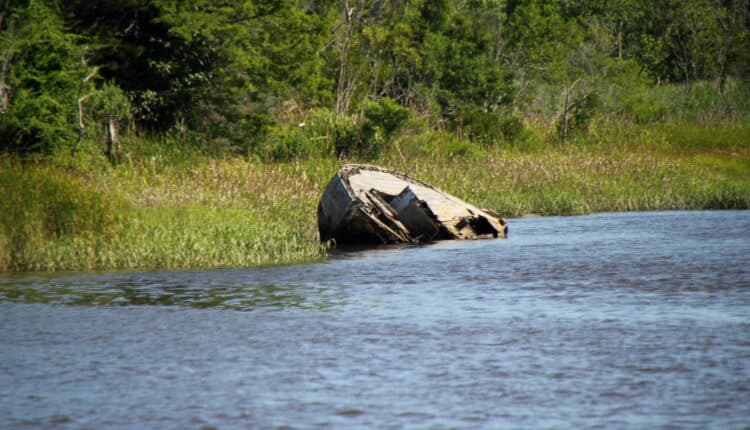Holy ship! Remains from 4 potential shipwrecks were found in NC
East Carolina University’s Program in Maritime Studies discovered the remains of 4 potential shipwrecks. Here’s what you need to know.
In a statement released on July 24, East Carolina University’s Program in Maritime Studies announced that they had found remains from four potential shipwrecks at the Brunswick Town/Fort Anderson State Historic Site in Brunswick County. While the discovery is a source of excitement for the program’s students and faculty—as well as history enthusiasts across the state—there’s one group of remains that may prove to be even more thrilling than the rest.
The ECU believes that some of the wreckage may be that of La Fortuna, a Spanish privateer that was attacked close to the colonial wharves of Brunswick Town in September 1748, during the tail end of King George’s War. According to CBS News, the university collected samples of wood from the wreckage “that suggest the shipbuilders incorporated raw materials from Spanish Caribbean colonies in the 18th century.” The potential that this is indeed La Fortuna is amplified by the fact that the ship’s remains were identified close to the site of a previous discovery. In 1985, an 18th-century canon believed to have been from La Fortuna was found nearby.
But how did the ECU even find the wreckages to begin with? And what other discoveries were made alongside that of La Fortuna?
How the discoveries were made
Cory van Hees, a maritime studies graduate at ECU, said that he and his dive buddy, Evan Olinger, “were taking width measurements of Wharf Four to help delineate the site.” Van Hees went on to say that visibility in that area of the Cape Fear River is usually pretty low, so Olinger became disoriented when trying to find the Northern portion of the wharf. He and van Hees switched positions, and the same thing happened to van Hees: He became disoriented too, only in his disorientation, he found something unexpected.
“I came across several wooden frames barely sticking out of the clay mud with evidence of planking just barely visible on the surface. I didn’t understand what I was looking at in that moment, but I knew I should relay the wooden structure to [the] faculty,” van Hees said in the ECU’s press release. Later on, Dr. Jason Raupp, an assistant professor at the university, confirmed that van Hees and Olinger did indeed identify a shipwreck, and that the duo potentially found La Fortuna. Van Hees said he felt “a little emotional” once the idea of his potentially historic finding fully kicked in.
While the ECU team was working along the Cape Fear River waterfront to retrieve the wreckage, they came across the remains of three additional ships. CBS News stated that one appears to have been a transportation boat, one is “a potential colonial flatboat,” and the other seems to be a ship that was used to reclaim land at the waterfront. Dr. Raupp expressed his excitement over the significant shipwreck sites, “as each one will help us to better understand the role of BTFA as one of the state’s earliest colonial port towns.”
What’s next for the shipwreck remains?
Approximately 40 pieces of wood from the supposed La Fortuna wreckage have since been collected during an “emergency recovery” to ensure the remains were gathered and protected from additional erosion. Those pieces, alongside the scavenged wreckage of the three other ships, were transferred to the Queen Anne’s Revenge Conservation Laboratory. The lab, which is housed on ECU’s campus in Greenville, is run by the North Carolina Office of State Archaeology.
Additional analysis of the wreckages, along with thorough research into the identity of the ships and details about their construction, is currently underway at ECU. Keep an eye on the university’s News Services page for new updates as they become available.



